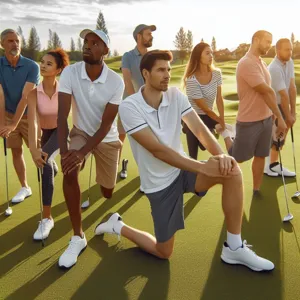Basketball is a fast-paced and exhilarating sport that captivates millions around the globe, but with its high-energy plays and intense physical demands, it also comes with a significant risk of injury.
Whether you’re a seasoned player or a weekend warrior, understanding the common injuries that can occur on the court is essential to both performance and longevity in the game. From ankle sprains to knee injuries, these ailments can sideline players and disrupt their training regimens. Fortunately, awareness and proactive measures can greatly reduce the risk of these injuries. In this blog post, we’ll explore the top five most common basketball injuries, delving into their causes and symptoms, and provide essential prevention tips to keep you in the game and off the sidelines. With the right knowledge and precautions, you can enjoy the thrills of basketball while minimizing the risk of injury.
1. Introduction to basketball injuries

Basketball is a high-intensity sport that demands agility, speed, and explosive movements, making it incredibly exhilarating to play. However, the fast-paced nature of the game comes with its share of risks, particularly when it comes to injuries. From sprains and strains to fractures and contusions, basketball injuries can sideline even the most dedicated athletes. Understanding the common types of injuries that occur on the court is the first step toward prevention and recovery.
Basketball frequently involves sudden stops, quick direction changes, and high-impact landings, which can lead to a variety of injuries. Players often push their limits, leading to overuse injuries that may not be immediately apparent but can significantly impact performance over time. Moreover, the competitive atmosphere can lead to players taking risks, such as jumping for a rebound or attempting a last-second shot, which can further increase the likelihood of injury.
In this post, we will explore the top five common basketball injuries, providing insights into their causes, symptoms, and the essential prevention tips to help players stay in the game. By being informed and proactive, players can minimize their risk of injury, ensuring they enjoy the sport they love while maintaining peak performance on the court. Whether you’re a seasoned player or just starting out, understanding these injuries and how to prevent them is crucial for a long and healthy basketball career.
2. Overview of the importance of injury prevention
In the fast-paced world of basketball, where agility, speed, and strength collide on the court, the thrill of competition often overshadows a critical aspect of the game: injury prevention. Understanding the importance of injury prevention is paramount for players at all levels, from aspiring young athletes to seasoned professionals. Each year, thousands of basketball players suffer injuries that could have been mitigated with proper precautions, leading to extended time away from the game they love.
Injury prevention isn’t just about avoiding pain; it’s about ensuring longevity in the sport. A well-implemented injury prevention strategy enhances athletic performance, allowing players to train harder and compete more effectively. By focusing on the fundamental aspects of safety, such as proper warm-ups, strength training, and flexibility exercises, players can significantly reduce their risk of common injuries like ankle sprains, knee issues, and muscle strains.
Moreover, an emphasis on injury prevention fosters a culture of awareness and responsibility among players, coaches, and trainers. By prioritizing safety, teams can not only protect their athletes but also cultivate a more resilient roster, capable of enduring the physical demands of the game. In this section, we will delve deeper into the various injury prevention techniques that are essential for keeping players on the court and off the sidelines, ensuring they can continue to showcase their skills and passion for basketball.
3. Ankle Sprains: Causes, symptoms, and recovery

Ankle sprains are among the most common injuries in basketball, often occurring during high-impact plays, abrupt direction changes, or landing awkwardly after a jump. The ankle consists of ligaments that provide stability by connecting the bones of the leg to the foot. When these ligaments are stretched or torn due to sudden movements or excessive force, it results in an ankle sprain.
### Causes
In basketball, ankle sprains can happen in a variety of ways. Players may inadvertently step on an opponent’s foot, roll their ankle upon landing, or pivot quickly to change direction. The risk is heightened on uneven surfaces or during intense gameplay when fatigue sets in, leading to diminished coordination and balance.
### Symptoms
Recognizing the symptoms of an ankle sprain is crucial for timely treatment and recovery. Early signs include pain and tenderness around the ankle, swelling, bruising, and difficulty bearing weight on the affected foot. In some cases, players may experience a popping sensation at the moment of injury, indicating a more severe sprain or even a fracture.
### Recovery
Recovery from an ankle sprain typically involves the R.I.C.E. method—Rest, Ice, Compression, and Elevation. Initially, it’s vital to rest the injured ankle, avoiding any weight-bearing activities that might exacerbate the injury. Applying ice can help reduce swelling and pain, while compression with a bandage or wrap provides additional support. Elevating the ankle above heart level aids in minimizing swelling.
While most mild to moderate sprains heal within a few weeks, it’s important to follow a structured rehabilitation program to regain strength and flexibility. Gradually reintroducing basketball-specific movements and exercises can help players return to the court safely. Additionally, incorporating ankle-strengthening exercises and wearing supportive footwear can significantly reduce the risk of future sprains. By understanding the causes, recognizing the symptoms, and committing to proper recovery techniques, players can protect themselves against this common yet often debilitating injury, ensuring they stay on the court and in the game.
4. Knee Injuries: Types, effects, and rehabilitation
### Knee Injuries: Types, Effects, and Rehabilitation
Knee injuries are among the most prevalent and concerning injuries in basketball, primarily due to the high-impact nature of the sport coupled with the frequent changes in direction and rapid stops. The knee, being a complex joint comprised of bones, ligaments, tendons, and cartilage, is susceptible to various types of injuries, including sprains, strains, and tears.
The most common knee injuries in basketball include:
1. **Anterior Cruciate Ligament (ACL) Tears**: Often caused by sudden stops or changes in direction, an ACL tear can sideline a player for months. It is often accompanied by a distinct popping sound and swelling.
2. **Meniscus Tears**: This injury occurs when the knee is twisted while bearing weight, leading to pain, swelling, and difficulty in movement. The meniscus acts as a cushion between the thigh bone and shin bone, making injuries to this cartilage particularly debilitating.
3. **Patellar Tendinitis**: Commonly known as “jumper’s knee,” this overuse injury results from repetitive jumping and landing, leading to inflammation of the patellar tendon. Symptoms include pain and tenderness around the kneecap.
4. **Knee Sprains**: These occur when the ligaments surrounding the knee are stretched or torn, often due to awkward landings or direct impacts. Sprains can vary in severity, from mild discomfort to complete ligament tears.
The effects of knee injuries extend beyond the physical realm, impacting a player’s performance, mental health, and overall enjoyment of the game. The fear of re-injury can lead to hesitation on the court, affecting a player’s confidence and gameplay.
Rehabilitation is crucial for recovery and typically involves a combination of rest, ice, compression, and elevation (RICE) in the initial stages. Physical therapy plays a pivotal role in restoring strength and flexibility, focusing on exercises that promote stability and mobility. In some cases, surgical intervention may be necessary, especially for severe ligament tears.
Preventing knee injuries requires a proactive approach. Players should engage in strength training to build the muscles around the knee, enhance flexibility through stretching, and focus on proper techniques when jumping and landing. Additionally, wearing appropriate footwear and using supportive braces can provide added protection during games and practices.
By understanding the types, effects, and rehabilitation options for knee injuries, players can take informed steps to safeguard their knees, ensuring they stay on the court and continue to enjoy the game they love.
5. Hamstring Strains: Identification and treatment options

Hamstring strains are among the most common injuries in basketball, often resulting from the explosive movements that the game demands. Whether it’s sprinting down the court, jumping for a rebound, or quickly changing direction, the hamstrings—located at the back of your thigh—are put to the test. This muscle group is crucial for speed and agility, making it vulnerable to injury when overstretched or overexerted.
**Identification of Hamstring Strains:**
Recognizing a hamstring strain is essential for prompt treatment. Symptoms typically manifest as a sharp pain in the back of the thigh, which may be accompanied by swelling, bruising, or a feeling of tightness. In some cases, players may hear a “pop” at the moment of injury. The severity of the strain can vary, with Grade I being mild, involving minimal tearing, and Grade III representing a complete rupture that may require surgical intervention. If you experience any of these symptoms, it’s important to stop playing immediately to avoid further damage.
**Treatment Options:**
Once identified, the treatment for a hamstring strain should begin promptly. The R.I.C.E method—Rest, Ice, Compression, and Elevation—should be employed in the initial stages. Resting the affected leg helps to prevent further injury, while applying ice can reduce swelling and numb the pain. Compression wraps and elevating the leg can assist in minimizing inflammation.
As the pain subsides, a guided rehabilitation program should be introduced, focusing on gentle stretching and strengthening exercises. Consulting with a physical therapist can significantly enhance recovery, ensuring that you regain full strength and flexibility before returning to the court. It’s crucial to avoid rushing back into play, as premature return can lead to recurrent injuries.
Incorporating preventive strategies into your training routine can also significantly reduce the risk of hamstring strains. These include proper warm-ups and cool-downs, strengthening exercises targeting the hamstrings, and maintaining overall flexibility through regular stretching sessions. By prioritizing these practices, you can keep your hamstrings healthy and remain an agile player on the court.
6. Wrist and Hand Injuries: Common types and prevention
Wrist and hand injuries are among the most prevalent issues faced by basketball players, often resulting from the high-speed nature of the game, where quick movements and sudden stops can lead to awkward falls or impacts. Common types of wrist and hand injuries include sprains, fractures, and tendonitis. The repetitive motion of dribbling, shooting, and passing can strain the ligaments and tendons in these areas, making them susceptible to injury.
**Wrist Sprains** occur when ligaments are stretched or torn, often happening when a player falls on an outstretched hand or collides with another player. Symptoms typically include pain, swelling, and restricted movement, making it crucial for players to recognize the signs early and seek treatment.
**Fractures**, particularly of the scaphoid bone in the wrist or any of the metacarpal bones in the hand, can happen due to direct trauma or a fall. These injuries often require immobilization and can sideline a player for an extended period, depending on the severity.
**Tendonitis** is another common issue, often affecting the wrist flexor and extensor tendons due to overuse. This condition manifests as pain and tenderness in the wrist, especially during activities that involve gripping or lifting.
To prevent wrist and hand injuries, players can adopt several essential strategies:
1. **Strength Training**: Engaging in regular strength training exercises that target the muscles of the forearm and hand can enhance stability and support, reducing the risk of injuries. Incorporate wrist curls, grip exercises, and resistance band workouts into your routine.
2. **Proper Technique**: Focus on mastering proper shooting and ball-handling techniques to minimize the strain on your wrists and hands. Work with a coach to ensure your form is correct, particularly during dribbling and passing.
3. **Wrist Supports**: Wearing wrist braces or supports during games and practices can provide additional stability and protection against potential injuries. Ensure that these supports are comfortable and allow for natural movement.
4. **Warm-Up and Stretching**: Always include a thorough warm-up and stretching routine before games and practices. Pay special attention to wrist and hand stretches to improve flexibility and reduce tension in the muscles and ligaments.
5. **Listen to Your Body**: Finally, one of the most critical prevention tips is to listen to your body. If you experience pain or discomfort in your wrists or hands, don’t push through it. Give yourself the necessary rest and seek medical advice if the pain persists.
By understanding the common types of wrist and hand injuries and implementing these preventive measures, players can enjoy the game while significantly reducing their risk of injury on the court.
7. Achilles Tendon Injuries: Signs and preventive measures

The Achilles tendon, located at the back of the ankle, is one of the strongest tendons in the body, connecting the calf muscles to the heel bone. However, its robustness does not make it immune to injury, especially for basketball players who frequently engage in jumping, quick directional changes, and high-impact landings. Achilles tendon injuries can range from mild strains to complete tears, and they often manifest with specific signs that players should be vigilant about.
**Signs of Achilles Tendon Injuries:**
1. **Pain and Stiffness:** One of the most common early signs is a gradual onset of pain along the tendon, typically felt just above the heel. This discomfort may be more pronounced in the morning or after periods of inactivity, often easing with movement but returning after extensive play.
2. **Swelling:** Any noticeable swelling around the tendon can indicate inflammation, which can lead to more severe injuries if left unaddressed.
3. **Difficulty with Movement:** Players might experience difficulty in pushing off the foot during jumps or sprints, as well as an inability to rise onto the toes.
4. **Popping Sensation:** In the case of a complete rupture, many players report a sudden, sharp pain accompanied by a popping sensation, often described as if they were struck in the back of the leg.
**Preventive Measures:**
To safeguard against Achilles tendon injuries, players should incorporate the following preventive measures into their training routine:
– **Strengthening Exercises:** Focus on calf raises and eccentric heel drops to strengthen the calf muscles and improve tendon resilience. A strong calf can better absorb the impact of jumps and quick movements.
– **Proper Warm-Up:** Prioritize a comprehensive warm-up that includes dynamic stretching and mobility exercises targeting the ankles and calves. This helps prepare the muscles and tendons for the rigorous demands of basketball.
– **Wear Appropriate Footwear:** Invest in high-quality basketball shoes that provide adequate arch support and cushioning. The right footwear can significantly reduce strain on the Achilles tendon during intense play.
– **Gradual Increase in Activity:** Avoid sudden increases in workout intensity or duration. Gradually ramping up your training allows the tendon to adapt and strengthen over time.
– **Listen to Your Body:** Pay attention to any discomfort or unusual sensations in the Achilles area. Early intervention is key—if you notice persistent pain, consult a medical professional to prevent exacerbating the issue.
By staying informed about the signs and implementing these preventive measures, players can significantly reduce their risk of Achilles tendon injuries, ensuring they remain on the court and performing at their best.
8. Essential Warm-Up and Stretching Exercises
### Essential Warm-Up and Stretching Exercises
In the high-energy world of basketball, where agility, speed, and explosive movements are paramount, the importance of a proper warm-up and stretching routine cannot be overstated. Engaging in these essential exercises not only enhances performance but significantly reduces the risk of common injuries.
A well-structured warm-up should begin with light aerobic activities to increase your heart rate and blood flow to the muscles. This could include jogging around the court, high knees, or butt kicks for about 5-10 minutes. This initial phase prepares your body for the physical demands of the game, gradually elevating your body temperature and loosening your joints.
Following the aerobic warm-up, it’s crucial to incorporate dynamic stretching exercises. Unlike static stretches, which involve holding a stretch for an extended period, dynamic stretches are active movements that stretch the muscles and prepare them for action. Think of exercises like leg swings, walking lunges, and arm circles. These movements mimic the actions you will perform on the court, helping to enhance your flexibility and range of motion while also activating the muscle groups you will rely on during play.
After your dynamic routine, consider adding sport-specific drills that simulate basketball movements. This could involve dribbling drills, defensive slides, or jumping exercises. Not only do these drills warm up your muscles, but they also improve your coordination and muscle memory, setting a solid foundation for your performance.
Finally, never underestimate the importance of cooling down after practice or games. Gradually bringing your heart rate back to normal through light jogging or walking, followed by static stretching, can help prevent stiffness and soreness, ensuring your body recovers properly.
By committing to a comprehensive warm-up and stretching routine, you equip your body to handle the rigors of basketball while significantly lowering your chances of injury. Remember, a few minutes spent on preparation can lead to a season filled with play, rather than sidelined by preventable injuries.
9. Strength Training for Injury Prevention
Strength training is a cornerstone of injury prevention in basketball, a sport characterized by quick cuts, explosive jumps, and high-impact collisions. By incorporating targeted strength training into their routines, players can significantly reduce their risk of common injuries such as ankle sprains, knee problems, and muscle strains.
The key lies in building a strong foundation of muscle that supports the joints and enhances overall stability. For instance, strengthening the muscles around the knees—particularly the quadriceps, hamstrings, and calves—creates a more stable environment that can withstand the rigors of intense gameplay. A well-designed strength training program should focus on compound movements, such as squats, deadlifts, and lunges, which engage multiple muscle groups and improve functional strength.
Additionally, it’s essential to pay attention to the core. A strong core not only improves balance and coordination but also helps in transferring power effectively during movement, reducing the likelihood of overuse injuries. Exercises like planks, Russian twists, and medicine ball throws can fortify the core muscles.
Moreover, strength training should not be limited to the off-season. Regular, consistent workouts throughout the basketball season will help maintain strength levels and ensure that players are physically prepared for the demands of the game. Balancing strength training with flexibility exercises, such as stretching and yoga, can further enhance muscle function and joint health.
Ultimately, players who prioritize strength training as part of their training regimen are not only equipping themselves to perform better on the court but are also taking proactive steps to protect their bodies from injury. With a well-rounded approach to fitness, athletes can enjoy the game they love while minimizing the risk of injury.
10. Proper Footwear: Choosing the right shoes for basketball
When it comes to basketball, the right footwear can be the difference between a stellar performance and an untimely injury. Proper footwear is essential not just for enhancing your game but for safeguarding your body against common injuries that can occur on the court. The demands of basketball—quick direction changes, jumps, and sudden stops—place a significant amount of stress on your feet and ankles. This is where investing in high-quality basketball shoes pays off.
Look for shoes designed specifically for basketball, as they offer features that cater to the unique movements of the sport. Good basketball shoes typically have a sturdy, supportive structure, a cushioned sole for shock absorption, and a rubber outsole that provides excellent traction on the court. You want shoes that fit snugly without being too tight—this allows for stability while still enabling natural foot movement.
Additionally, consider the type of support your feet need. Players with flat feet or high arches may need specialized footwear or orthotic inserts to help maintain proper alignment and reduce the risk of injuries like plantar fasciitis or ankle sprains. Take the time to try on different brands and styles, and if possible, test them out with some light dribbling or shooting to see how they feel in motion.
Remember that worn-out shoes can lead to a higher likelihood of injury, so routinely check the condition of your footwear. If you notice significant wear on the soles or if the cushioning no longer provides the support you need, it’s time for a replacement. Making informed choices about your footwear can greatly reduce your risk of common basketball injuries, allowing you to stay on the court longer and play your best game.
11. Hydration and Nutrition for Injury Prevention
Hydration and nutrition play a crucial role in maintaining peak performance on the basketball court and preventing injuries. As players engage in high-intensity drills and fast-paced games, their bodies lose significant amounts of fluids and essential nutrients through sweat. Without proper hydration, players risk fatigue, cramps, and decreased coordination, all of which can lead to injuries.
To ensure optimal hydration, players should start their day with water and continue to sip throughout practice and games. A general rule of thumb is to drink at least 16-20 ounces of water two hours before hitting the court, followed by another 8-10 ounces about 20-30 minutes prior to play. During activities, athletes should aim to replenish fluids lost through sweating, particularly if the session lasts longer than an hour. Electrolyte-infused drinks can also be beneficial, especially in warmer conditions, as they help restore the essential salts lost through perspiration.
Nutrition is equally vital in maintaining a robust and injury-resistant body. A well-balanced diet rich in carbohydrates, proteins, healthy fats, vitamins, and minerals will fuel the body and support muscle recovery. Carbohydrates provide the energy needed for sustained performance, while proteins help repair and build muscle tissue after rigorous activity. Incorporating a variety of fruits and vegetables into meals ensures that players receive the necessary antioxidants and nutrients to combat inflammation and enhance overall recovery.
In addition to pre-game meals, timing is essential. Consuming a nutrient-dense snack or meal about 30-60 minutes before a game can provide the energy boost needed for optimal performance. Post-game, it’s crucial to replenish lost nutrients with a combination of protein and carbohydrates to aid in recovery.
In summary, prioritizing hydration and nutrition not only enhances performance on the court but is also a foundational aspect of injury prevention. By keeping their bodies well-hydrated and nourished, players can significantly reduce the risk of common basketball injuries, ensuring they stay in the game and continue to reach their full potential.
12. Importance of Rest and Recovery
Rest and recovery are often overlooked components of an athlete’s training regimen, yet they play a crucial role in preventing injuries and enhancing performance on the basketball court. While the adrenaline rush of the game can make it tempting to push through fatigue, understanding the significance of adequate recovery is essential for any player, whether a seasoned pro or a weekend warrior.
When we talk about rest, we refer not just to the hours spent sleeping, but also to the strategic pauses in training and gameplay. These moments allow the body to repair itself, replenishing energy stores, rebuilding muscle fibers, and reducing the risk of overuse injuries. When players neglect to give their bodies the downtime they need, they increase the potential for strains, sprains, and stress fractures, which can sideline them for weeks or even months.
Incorporating rest days into your training schedule is vital. This doesn’t mean complete inactivity; rather, it could involve low-impact activities like swimming or yoga that promote blood flow and flexibility without putting stress on the joints. Additionally, ensuring that players get quality sleep each night is equally important. Sleep is the body’s natural recovery tool, and during these hours, vital processes occur, including muscle repair and memory consolidation, which are essential for honing basketball skills.
Active recovery techniques, such as foam rolling, stretching, and even gentle massage, can also aid in reducing muscle soreness and enhancing circulation. Furthermore, hydration and proper nutrition are integral to recovery, as they provide the necessary nutrients and fluids to fuel the body and support its healing processes.
In summary, prioritizing rest and recovery can significantly impact a basketball player’s overall health and performance. By allowing the body time to recuperate, athletes can not only reduce their risk of common injuries but also ensure they are ready to hit the court at their best when it matters most.
13. Recognizing the Signs of Overtraining
Recognizing the signs of overtraining is crucial for maintaining peak performance on the basketball court and ensuring long-term health. Overtraining occurs when an athlete pushes their body beyond its ability to recover, leading to a decline in performance and an increased risk of injury. It’s not just about physical fatigue; overtraining can also manifest in various ways, both physically and mentally.
Physically, players may experience persistent muscle soreness, joint pain, and a decreased ability to perform at their usual intensity. If you find yourself struggling to keep up with your normal training regimen or feeling unusually tired after workouts, it may be time to reassess your training load. Another common indicator is an increase in the frequency or severity of injuries, such as sprains or strains, which often results from the body being unable to cope with the demands placed upon it.
Mentally, overtraining can lead to irritability, anxiety, and lack of motivation. If you notice a shift in your enthusiasm for the game or feel a sense of dread before practices or games, these could be signs that your body is crying out for a break. Sleep disturbances are also a telltale sign; if you’re having trouble falling or staying asleep, it might be because your body is in a constant state of stress and fatigue.
To prevent overtraining, it’s essential to incorporate rest days into your training schedule, allowing your body to recover and rebuild. Listen to your body; if you feel worn out, don’t hesitate to take a step back. Additionally, focusing on proper nutrition and hydration can help support recovery, and incorporating cross-training activities can provide a break from basketball while still keeping you active. By recognizing the signs of overtraining and prioritizing recovery, you can keep your performance sharp and enjoy the game for years to come.
14. When to Seek Professional Help
Knowing when to seek professional help is crucial in managing basketball injuries effectively. While minor sprains and strains can often be treated with rest, ice, compression, and elevation (RICE), there are specific signs that indicate a need for medical attention. If you experience persistent pain that doesn’t subside after a few days of self-care, or if the affected area shows signs of swelling, bruising, or deformity, it’s time to consult a healthcare professional.
Additionally, if you find yourself unable to bear weight on the injured limb, or if you experience numbness or tingling, these symptoms could signal a more serious injury that requires immediate evaluation. It’s also important to seek help if you hear a popping sound during the injury, as this could indicate a torn ligament or tendon, which often necessitates a more intensive treatment approach.
Professional assessment not only helps in diagnosing the extent of your injury but also guides you through an appropriate rehabilitation program. This may include physical therapy to strengthen the affected area, improve flexibility, and restore full function, allowing you to return to the court stronger and more resilient. Remember, ignoring injuries or delaying treatment can lead to complications and prolonged recovery times, so it’s always better to err on the side of caution when it comes to your health and athletic performance.
15. Conclusion: Staying safe and healthy on the court
In conclusion, prioritizing safety and health on the basketball court is paramount for players at all levels, from the weekend warrior to the seasoned pro. The fast-paced nature of the game, combined with its physical demands, undoubtedly increases the risk of injuries. However, with the right approach, many of these injuries can be prevented.
By understanding the most common basketball injuries—such as ankle sprains, knee injuries, and tendonitis—you empower yourself to take proactive measures. Implementing a comprehensive warm-up routine that includes stretching and strengthening exercises lays a solid foundation for injury prevention. Equally important is the need for proper footwear that provides adequate support and grip, as well as maintaining a safe playing environment to minimize hazards.
Moreover, don’t underestimate the value of rest and recovery. Listening to your body is crucial; fatigue can significantly heighten injury risk. If you experience pain, addressing it promptly with the appropriate treatment or seeking professional help can make all the difference.
Ultimately, playing basketball should be about enjoyment and competition, not sidelining injuries. By adopting these essential prevention tips, you can ensure that you stay safe, healthy, and on the court, ready to give your best performance and enjoy the game you love. Stay vigilant, stay safe, and embrace the countless joys that basketball brings!
In conclusion, understanding the top five common basketball injuries and implementing essential prevention tips is crucial for every player, whether a seasoned athlete or just starting their basketball journey. By prioritizing proper warm-ups, using the right equipment, and focusing on strength and conditioning, you can significantly reduce the risk of injury and ensure a more enjoyable playing experience. Remember, staying informed and proactive about your health not only enhances your performance on the court but also prolongs your love for the game. We hope you found these insights valuable and encourage you to share them with your teammates—after all, a healthy team is a successful team! Stay safe, keep shooting for the stars, and enjoy every slam dunk along the way!













